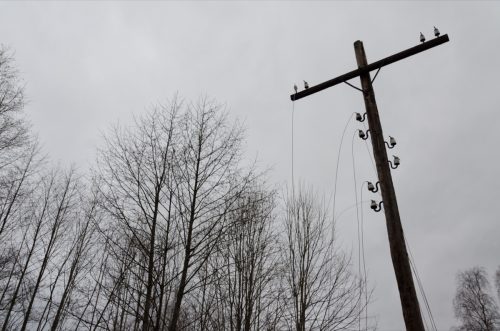Flash Flood Warnings This Week as 6+ Inches of Rain Predicted in These Regions

The past several weeks have been defined by weather-related buzzwords like “polar vortex,” “arctic blast,” and “bomb cyclone.” We’ve had to keep up with all the terms, while also staying up-to-date on unpredictable conditions across the U.S.—even a storm that brought everything but the kitchen sink. And Mother Nature isn’t slowing down any time soon: New flash flood warnings have been issued, as U.S. regions could face six or more inches of rain this week. Read on to find out if you need to be prepared.
RELATED: Above-Average Temps Warming Entire U.S. This Week—How It’ll Affect Your Region.
Warmer temperatures are on the horizon, but we’ll also see wet weather.

This past week, freezing temperatures were plaguing a large portion of the nation, but according to CNN, the arctic chill will soon be warming up thanks to several fronts and low-pressure systems bringing warmer air and tropical moisture.
While this is certainly good news for those of us who don’t like the cold, there are other dangers associated with balmier temperatures, primarily rain and flooding hazards. In fact, CNN reports that 37 million people are now facing a flash flood warning this week.
RELATED: How New “Extreme” Thunderstorms and Wind Are Increasing—And Affecting Where You Live.
Freezing rain was already an issue in Texas, Oklahoma, and Arkansas today.

Downpours of freezing rain already caused delays and flight cancellations in northern Texas, Oklahoma, and Arkansas this morning, AccuWeather reports—and these states aren’t out of the woods yet.
Today, eastern Texas is facing a Level 2 risk of excessive rainfall, as the warm air helps freezing rain and ice turn into rain. According to AccuWeather, the most widespread risk of flash floods is in College Station, Waco, and Tyler, Texas, on Tuesday night. There will also be thunderstorms and wind gusts reaching up to 80 mph. This could take down trees and lead to power outages, the outlet reports.
The rain and flash flooding risks move east tomorrow.

Tomorrow, the rain moves east, and the lower Mississippi River Valley will face the same risk of heavy thunderstorms. According to AccuWeather, there is potential for damage from wind gusts and flash flooding, and CNN points out that the area will be under a Level 2 of 4 risk of excessive rainfall.
But there’s some good with the bad, as some of these areas have been entrenched in a drought.
“The rain will also be welcome for the lower Mississippi Valley with portions of northern Louisiana to northwestern Mississippi within exceptional drought conditions,” AccuWeather meteorologist Joe Bauer said.
RELATED: Weather Predictions Keep Changing—What the Unpredictable Shifts Mean for You.
Rain totals could be excessive, experts say.

AccuWeather also reports that a “widespread area across the South” is in for heavy rainfall that will exceed an inch. Eastern Texas through Louisiana, southern Arkansas, Mississippi, northern Alabama, and southern Tennessee, could see even higher totals—and areas within this region may have four inches or more before the week is out.
Beyond that, in some neighborhoods where repeated thunderstorms are passing through, residents could get close to the AccuWeather Local StormMax, which is 14 inches of rainfall. But in all affected regions over the next five days, CNN reports that five to six inches are likely, with some areas seeing higher amounts.
According to AccuWeather, the rainy skies will move to the Southeast after this week, and while there’s a chance that rain and thunderstorms could rock the South yet again on Friday and Saturday, dry conditions should be back later in the weekend.
RELATED: For more up-to-date information, sign up for our daily newsletter.